#June moore
Explore tagged Tumblr posts
Text

Al Moore - June 1951 Esquire Magazine Calendar Illustration - American Pin-up Calendar Collection
437 notes
·
View notes
Text



97 notes
·
View notes
Text












Ghostbusters was released in the United States on June 8, 1984.
#Rose Main Reading Room#Stephen A. Schwarzman Building#Hook & Ladder Company 8#14 North Moore Street#logo#Manhattan#2023#summer 2018#New York City#55 Central Park West#Ghostbusters#released#8 June 1984#40th anniversary#US history#culture#LUGA#movie#film#architecture#cityscape#New York Public Library Main Branch#476 Fifth Avenue#original photography#tourist attraction#landmark#travel#vacation#USA
69 notes
·
View notes
Text

Peter Moore - Charlotte Moorman and Nam June Paik (Paik as Human Cello) at John Cage’s “26’1.1499” For a String Player
4 October 1965
#contemporary art#photography#black and white photography#Peter Moore#Charlotte Moorman#Nam June Paik#performance art
22 notes
·
View notes
Text

nam june paik and charlotte moorman on nam june paik's tv bed photographed by peter moore, 1972, gelatin silver print
33 notes
·
View notes
Text

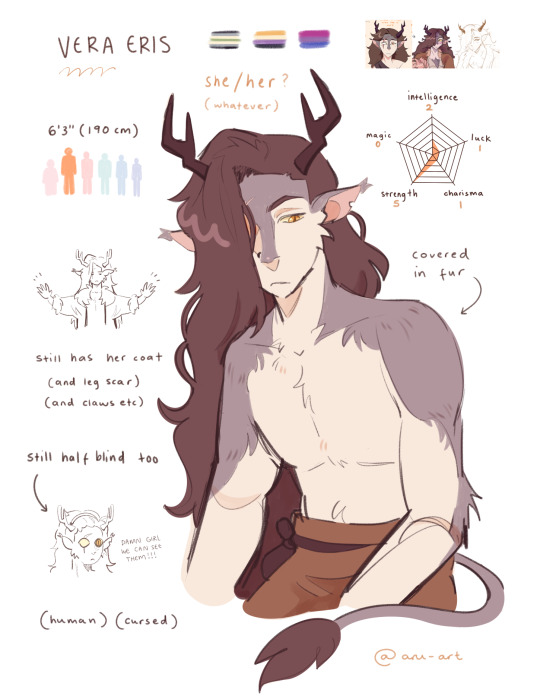

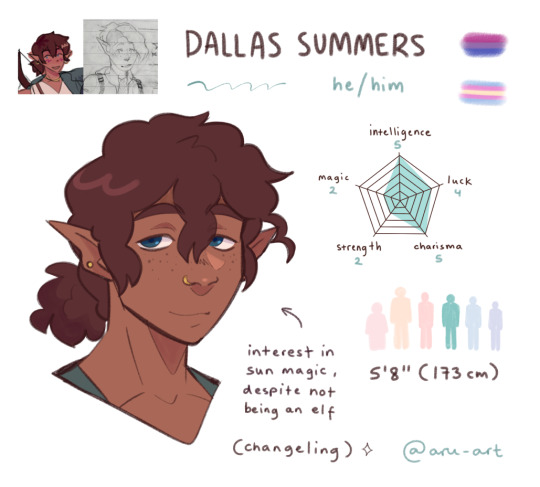


been on an oc redesign kick. this is incomprehensible to anyone but me and like 2 other people probably. hi tim if ur reading this
#im not entirely happy with kaori still but im glad i got everyone's different ears down finally. AND THEIR HAIR. god their hair#im really reallyyyy pleased with dallas though hes so cutie#moor's edge#<- oc tag for these freaks#june and vera are both trans in the way that yea they probably have something going w their genders but theyre at work so they dont care rn#can call them he or she respectively but they wont correct u if u call them anything else#character design#illustration#ocs#sketches#my art#2024#i always feel a bit dumb posting oc stuff cause its like. who cares. but then i remember this blog is just meant to be an archive for me#i also feel like kaori has more going on than just being bi but she hasnt been in my mind's rock tumbler long enough to figure that out#ill let her cook for a bit longer#none of my guys are cishet though thats all i know
23 notes
·
View notes
Text

The Hypersentience Bulletin, Vol. 5, No. 2, Ananta Foundation, Summer Solstice, 21 June 1979
#witches#bulletins#occult#vintage#the hypersentience bulletin#summer solstice#ananta foundation#marcia moore#21 june 1979#1979
23 notes
·
View notes
Text


…thoughts—just mere thoughts—are as powerful as electric batteries—as good for one as sunlight is, or as bad for one as poison.
#reading#books read in 2024#bookblr#books#book photography#book blog#bibliophile#books reading#books and reading#the secret garden#frances hodgson burnett#classic#classic literature#english#english literature#english countryside#yorkshire#moors#yorkshire accent#mary lennox#dickon#colin craven#hope#magic#secret garden#found family#wholesome#review#three stars#june reads
28 notes
·
View notes
Photo

Spider-Man: Across the Spider-Verse (2023)
This is a Movie Health Community evaluation. It is intended to inform people of potential health hazards in movies and does not reflect the quality of the film itself. The information presented here has not been reviewed by any medical professionals.
Spider-Man: Across the Spider-Verse has extensive use of extreme strobe effects surrounding sci-fi happenings. This includes sudden glitching flashes, and giant machines that produce colorful and harsh strobes. All of the opening production company logos (of which there are at least 6) are covered in the glitching effect. The lights on police cars also create extreme strobes frequently.
There is a lot of action at high speeds and extreme heights, with plenty of disorienting camera angles and maneuvers including rolls and swinging. Multiple scenes take place with no consistent sense of up and down.
Flashing Lights: 10/10. Motion Sickness: 10/10.
Image ID: A promotional poster for Spider-Man: Across the Spider-Verse
#Movie Health Community#Health Warning#Actually Epileptic#Photosensitive Epilepsy#Seizures#Migraines#Motion Sickness#Sony#Spider-Man: Across the Spider-Verse#June#2023#Shameik Moore#Hailee Steinfeld#Jake Johnson#Issa Rae#Daniel Kaluuya#Karan Soni#Jason Schwartzman#Brian Tyree Henry#Luna Lauren Vélez#Greta Lee#Rachel Dratch#Jorma Taccone#Shea Whigham#Oscar Isaac#Joaquim Dos Santos#Kemp Powers#Justin K. Thompson#Rated PG
164 notes
·
View notes
Text
Nightwish - Over the Hills and Far Away
#Nightwish#Over the Hills and Far Away#EP#Release date:#June 8th#2001#Over the Hills and Far Away (Gary Moore cover)#Genre:#Symphonic Power Metal#Themes:#Nature#Astrology#Religion#Fantasy#Beauty
26 notes
·
View notes
Text
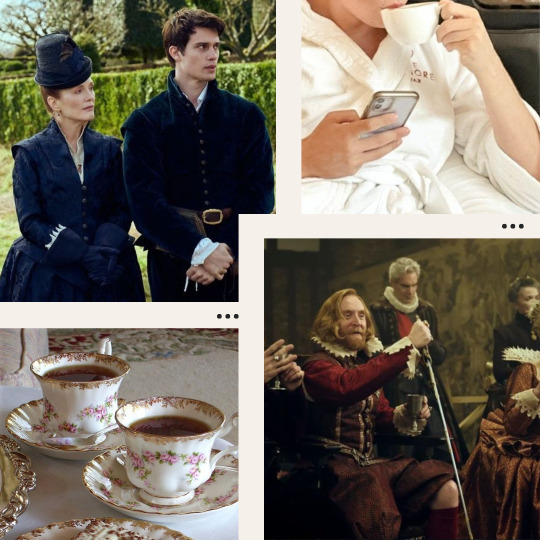
Mary & George & Henry
When Mary & George is announced, a certain prince is incredibly happy about it.
Henry and Alex's reactions to the series.
Rating: M | Word Count: 4.1k | One-shot
#rwrb#rwrb fanfic#red white and royal blue fanfic#red white and royal blue#mary & george#mary and george#firstprince fanfic#firstprince#nicholas galitzine#tony curran#julianne moore#henry fox mountchristen windsor#alex claremont diaz#june claremont diaz#nora holleran
26 notes
·
View notes
Text

Al Moore - "The Age of Innocence" - June 1951 Esquire Magazine Esquire Girl Gatefold Illustration - American Pin-up Calendar Collection
148 notes
·
View notes
Text
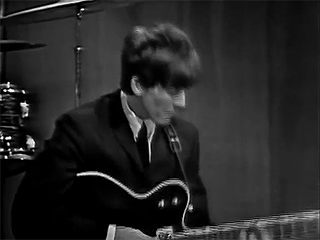
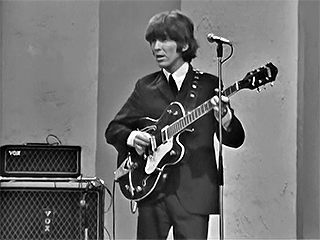
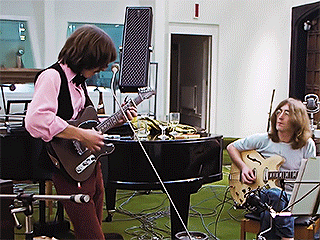
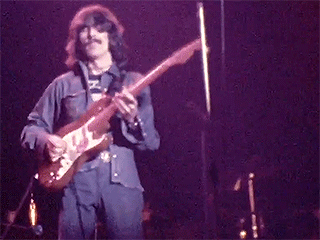
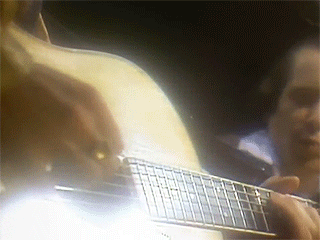
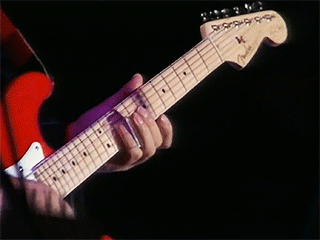
Happy belated 80th birthday to my favourite guitar player. <3
A sequel to this post.
George Harrison: You need Eric Clapton.
John Lennon: No, you need George Harrison.
"He showed me a lot of things on the guitar. George was a really great guitar player. He just didn't think he was. He told me that he almost quit one time because he couldn't play as well as Eric. He said that Eric just had this feel and touch. George really wanted to play like that and told me so, many times. But who wouldn't?" - Bobby Whitlock (Derek and the Dominoes)
“[George is] a great guitar player. When he strikes up on the slide there’s nobody better; his precision, his vibrato is perfect. But he always plays it down.” - Jeff Lynne (ELO, Traveling Wilburys)
"I had heard George's playing on the records, but I hadn't seen him play before I saw A Hard Day's Night. I picked up some tips from him, like playing the G-string up and down the neck for lead guitar because it gave more punch to the lead line. And of course he played the Rickenbacker 12-string and that was a big influence on me, but I even liked to watch his Gretsch playing. He did a lot of barre chords -- John and George used barre chords almost exclusively, whereas coming from the folk tradition I used lots of open chords. With The Searchers and The Seekers, you could hear some of that 12-string out there, but primarily it was The Beatles. I know George influenced us a lot." - Roger McGuinn (The Byrds)
“The innovations in guitar technology he brought to The Beatles were just amazing. He defined what we now know as this classic Rickenbacker 12-string sound. He laid the groundwork for me. And it’s utterly definitive. Nobody had used that volume-pedal technique before ‘I Need You’ […] But you can’t beat ‘Ticket To Ride’. It’s futuristic guitar, even before Hendrix came on the scene. It still sounds like a modern guitar part now." - Johnny Marr (The Smiths)
"I met George during the session Cream did for Badge, and I was very impressed with his playing [under the pseudonym L’Angelo Mysterioso]. I took it for granted that people like McCartney and Lennon were brilliant but didn’t really analyse it. But when you actually play with George you could see what an amazing guitar player he was, doing things that I hadn’t even thought of." - Jack Bruce (Cream)
"Me personally, I worshipped guitar players like George Harrison, who was this melodic part of the Beatles sound and he seemed like he served the song more than his own ego of how many notes per second he could play. I really appreciated that." - Vicki Peterson (The Bangles)
"I love George Harrison so much because [of] the way he would construct a little kind of solo within the song which would be part of the song. So from him I learned about melody […] George Harrison would create a little masterpiece in 8 bars in the middle of Hard Day's Night for example. It's a perfect example of that where he would do something that no other guitarist in the world would think of. He'd put this little lick in. It would have some little fast bits in it, and it would be so outside what you'd imagine the solo of that song to be. Later on I got to know George very well. We became very good friends at one time, and he could do things that no one else could do, and his slide playing was amazing because he used to have very strong Eastern influences from his days with Ravi Shankar and doing the meditation and everything. Just to be around someone like that you learn so much. He really was a giant in the music world for me, very sadly missed." - Gary Moore
"George’s guitar playing was just perfect. In those days we didn’t jam and get to the middle of a song and just play any old thing (laughs); we would have rehearsals and you’d kind of figure out what the part would be so from then on, when you played that song, that was the solo. He was that sort of guitar player and I learned that and I really liked that ‘cause that’s what I was thinking most of the time." - John Fogerty (Creedence Clearwater Revival)
"To see George Harrison there [on the Ed Sullivan Show], standing off to the side, looking down at his guitar while he played his licks -- to my impressionable mind it defined what a lead guitarist was. I knew right then what I wanted to do with my life: I wanted to be like the guy in the middle -- the guy looking down at his guitar and playing all the little fills and solos. Harrison taught me about short solos and hooks, and what a hook is. All those mid-Sixties Beatles tracks -- whether it was 'Day Tripper' or 'Ticket to Ride' or whatever -- they all start with a guitar lick that you wait to come around again in the chorus. That’s where I learned to do that." - Elliot Easton (The Cars)
“His chords were sometimes more a cluster of notes that, to my ears, are beautifully dissonant. The turnaround lick over the last chord in the chorus of the Beatles’ ‘Help’ functions on many levels. It’s such an innovative use of the open G and B strings ringing out, while a minor 3rd shape chromatically descends below it.” - Brian Bell (Weezer)
"I modeled myself after George Harrison a lot in the early days; solos you could sing along with. To this day, that's my approach, and I teach it as a guide at IMA's Rock 'n Roll Girl's Camps." - June Millington (Fanny)
“George was responsible for perhaps the most romantic guitar solo of all time when he recorded Something. It’s arguably among the most gorgeous and expressive solos in any song.” - Nancy Wilson (Heart)
“The solo [from the album version of Let It Be] -- the way his lick comes in after the keyboard breakdown strikes the perfect emotion and uplift for the track. I’ve ripped it off a million times, and will probably rip it off a million more before I’m through. The tone is perfectly gritty but without a safety net and mixed way on top of the tune, warts and all. Love it.” - Chris Shiflett (Foo Fighters)
"I was into Harrison. He's an amazing guitar player. Songwriter too." - Jim Root (Slipknot)
“I feel like the music world mostly thinks of George Harrison as the phenomenal songwriter that he was, but I think he’s really underrated as a tone innovator. I remember reading a GW article [January 2014] about I’m Only Sleeping and how George got this crazy tone by writing the solo, learning it backward and then recording it with the tape running back to front, resulting in the initial solo he had written with this insane, surreal effect. It’s so interesting to think about what that process would have been like, getting those tones in a completely analog studio setting.” - Nita Strauss
“As a guitarist, I've always loved George Harrison. I've never been a fan of the rock'n'roll style, or the solos, etc. I like simple things. When Harrison does a solo, it doesn't sound like a solo, it's just his part, it's never a show of virtuosity. I don't like sham.” - Alex Scally (Beach House)
“The mix [in Savoy Truffle] is all about a trip to the dentist’s office. The guitar tone -- most likely run through a fuzz pedal -- sounds like a drill. The bending, stabbing notes during the lyrics, ‘But you’ll have to get them all pulled out’ really gets the image of a dentist’s drill across vividly. I borrowed those bending, stabbing notes from him and have no intention of returning them anytime soon. The phrasing is total Harrison -- even with the fuzz, you can tell it’s him. He does have that ‘George Harrison sound’ as well, but to identify a guitar player with phrasing is rare.” - Joey Santiago (Pixies)
“Till There Was You shows George’s vast range of playing in 1963. He has lovely phrasing, uses diminished notes –- and there’s a fantastic use of the Gretsch tremolo arm before a fabulous run into the middle eight. [GW Editor’s note: Although he used a nylon-string guitar on the studio recording, Harrison often performed the song with an electric guitar.] To my young ears, this was masterful guitar playing." - Bernie Marsden (Whitesnake)
“No one changed the face of guitar more than George, in my opinion.” - Steve Lukather (Toto)
“He gives [Dig a Pony] space where it’s needed and doesn’t clutter the sound or detract from the lead vocal. This is definitely something we could all learn from him. His choice of notes adds a sense of melancholy to the song, lifting it above what could otherwise have been a bit of a throw-away number. Lennon would later refer to the song as ‘garbage,’ but for me, Harrison’s class makes it an underrated gem. Watching the footage, we get an insight into George’s excellent technique throughout the song; expertly switching between flat-picking, hybrid picking and straight finger picking to accent the lead lines and add texture to his parts. There’s a great shot where you can see him with his pick palmed while playing with his fingers, followed by a quick adjustment of the volume and tone controls, before swiftly returning the pick for some flatpicking. It’s skillfully done and impressive to watch.” - Kevin Starrs (Uncle Acid and the Deadbeats)
“I mean he was one of the first guys to really play melodic slide because most guys that play, they want to play blues, you know? Which is great, but George from My Sweet Lord on, he would play really melodic. I love the way he played, and he was really kind to me. He was very supportive, and he told me several times that he liked the way I played slide too, so I’m greatly indebted to George.” - Mike Campbell (Tom Petty and the Heartbreakers)
'My impression of George when I first met him was that he wasn’t really extremely confident, didn’t understand what all the fuss was about and felt like maybe people were mistaking him, or making a mistake, or seeing something that wasn’t there. That was the feeling I got from him. Everyone was into hot licks, but he didn’t have any. So I feel he didn’t have a glimpse of how really wonderful a musician he was…He was very conscious that he couldn’t read music and that he couldn’t play searing solos off the top of his head. What he could do was worth more to me. He was a beautiful musician, extremely musical. The 'Moonlight Sonata' is a very simple thing to play on the piano, but it’s beautiful. And beauty is not about technique." - David Bromberg
#george harrison#john lennon#the beatles#jeff lynne#roger mcguinn#quote compilation#my gifs#george 80#bobby whitlock#johnny marr#jack bruce#vicki peterson#gary moore#john fogerty#elliot easton#brian bell#june millington#nancy wilson#chris shiflett#jim root#nita strauss#alex scally#joey santiago#bernie marsden#steve lukather#kevin starrs#mike campbell#david bromberg#feel like this is self-indulgent but it's a special occasion so :p
261 notes
·
View notes
Photo
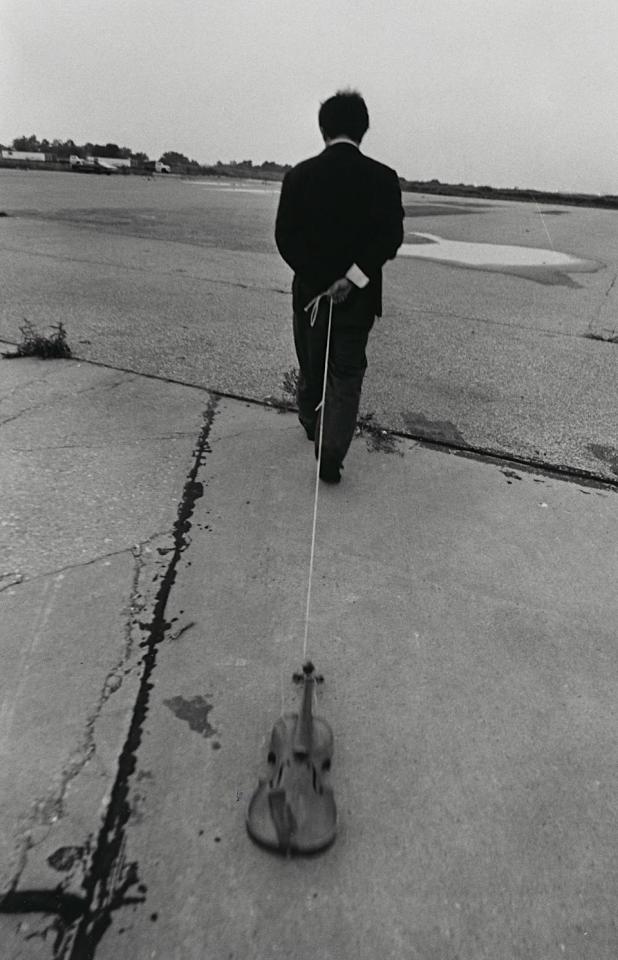
Nam June Paik performing “Violin with String” (1961) at the Twelfth Annual New York Avant Garde Festival, Floyd Bennett Field, New York, September 27, 1975 photo: Peter Moore
158 notes
·
View notes
Text
Golden Age of Hollywood Actors Born Before (And Including) 1937 Still Alive
This only includes actors that had at least one credited role in a Hollywood feature film or short up to 1959.
Elisabeth Waldo (b. 1918)
Caren Marsh Doll (b. 1919)
Patricia Wright (b. 1921)
Jacqueline White (b. 1922)
Annette Warren (b. 1922)
Ray Anthony (b. 1922)
Tommy Dix (b. 1923)
Eva Marie Saint (b. 1924)
Anne Vernon (b. 1924)
Maria Riva (b. 1924)
June Lockhart (b. 1925)
Lee Grant (b. 1925)
Peggy Webber (b. 1925)
Lise Bourdin (b. 1925)
Brigitte Auber (b. 1925)
Kerima (b. 1925)
Terry Kilburn (b. 1926)
Marilyn Erskine (b. 1926)
Bambi Linn (b. 1926)
David Frankham (b. 1926)
Tommy Morton (b. 1926)
Jill Jarmyn (b. 1926)
Marilyn Knowlden (b. 1926)
Genevieve Page (b. 1927)
Donna Martell (b. 1927)
William Smithers (b. 1927)
Peter Walker (b. 1927)
H.M. Wynant (b. 1927)
Betty Harford (b. 1927)
Cora Sue Collins (b. 1927)
Marilyn Granas (b. 1927)
Ann Blyth (b. 1928)
Nancy Olson (b. 1928)
Peggy Dow (b. 1928)
Kathleen Hughes (b. 1928)
Colleen Townsend (b. 1928)
Marion Ross (b. 1928)
Gaby Rodgers (b. 1928)
Jan Shepard (b. 1928)
Walter Maslow (b. 1928)
Tom Troupe (b. 1928)
Sidney Kibrick (b. 1928)
Garry Watson (b. 1928)
Fay Chaldecott (b. 1928)
Mark Rydell (b. 1929)
Terry Moore (b. 1929)
Vera Miles (b. 1929)
Ann Robinson (b. 1929)
Liseotte Pulver (b. 1929)
James Hong (b. 1929)
Rachel Ames (b. 1929)
Olga James (b. 1929)
Michael Forest (b. 1929)
Vikki Dougan (b. 1929)
Steve Terrell (b. 1929)
Margaret Kerry (b. 1929)
James Congdon (b. 1929)
Betsy Gay (b. 1929)
Jack Betts (b. 1929)
Clint Eastwood (b. 1930)
Joanne Woodward (b. 1930)
Mara Corday (b. 1930)
Nita Talbot (b. 1930)
Taina Elg (b. 1930)
Robert Wagner (b. 1930)
John Astin (b. 1930)
Tommy Cook (b. 1930)
Mary Costa (b. 1930)
Lois Smith (b. 1930)
Will Hutchins (b. 1930)
Peggy King (b. 1930)
Lynn Hamilton (b. 1930)
Don Burnett (b. 1930)
Clark Burroughs (b. 1930)
Robert Hinkle (b. 1930)
Sheila Connolly (b. 1930)
Barbara Bestar (b. 1930)
Rita Moreno (b. 1931)
Leslie Caron (b. 1931)
Carroll Baker (b. 1931)
William Shatner (b. 1931)
Mamie Van Doren (b. 1931)
Robert Colbert (b. 1931)
Barbara Eden (b. 1931)
Angie Dickinson (b. 1931)
Claire Bloom (b. 1931)
Marianne Koch (b. 1931)
Sylvia Lewis (b. 1931)
Carmen De Lavallade (b. 1931)
Zohra Lampert (b. 1931)
Michael Dante (b. 1931)
Ann McCrea (b. 1931)
Jack Grinnage (b. 1931)
Maralou Gray (b. 1931)
Billy Mindy (b. 1931)
Sugar Dawn (b. 1931)
Joanne Arnold (b. 1931)
Joel Grey (b. 1932)
George Chakiris (b. 1932)
Felicia Farr (b. 1932)
Abbe Lane (b. 1932)
Steve Rowland (b. 1932)
Jacqueline Beer (b. 1932)
Colleen Miller (b. 1932)
Joanne Gilbert (b. 1932)
Olive Moorefield (b. 1932)
Neile Adams (b. 1932)
Jacqueline Duval (b. 1932)
Edna May Wonnacott (b. 1932)
Richard Tyler (b. 1932)
Mickey Roth (b. 1932)
Leon Tyler (b. 1932)
Peggy McIntyre (b. 1932)
Christiane Martel (b. 1932)
Elsa Cardenas (b. 1932)
Claude Bessy (b. 1932)
Kim Novak (b. 1933)
Julie Newmar (b. 1933)
Debra Paget (b. 1933)
Constance Towers (b. 1933)
Joan Collins (b. 1933)
Kathleen Nolan (b. 1933)
Brett Halsey (b. 1933)
Robert Fuller (b. 1933)
Pat Crowley (b. 1933)
Barrie Chase (b. 1933)
Jackie Joseph (b. 1933)
Geoffrey Horne (b. 1933)
Tsai Chin (b. 1933)
Lita Milan (b. 1933)
Vera Day (b. 1933)
Diana Darrin (b. 1933)
Ziva Rodann (b. 1933)
Jeanette Sterke (b. 1933)
Marti Stevens (b. 1933)
Annette Dionne (b. 1933)
Cecile Dionne (b. 1933)
Johnny Russell (b. 1933)
Patti Hale (b. 1933)
Gary Clarke (b. 1933)
Olive Sturgess (b. 1933)
Shirley MacLaine (b. 1934)
Sophia Loren (b. 1934)
Shirley Jones (b. 1934)
Russ Tamblyn (b. 1934)
Pat Boone (b. 1934)
Audrey Dalton (b. 1934)
Claude Jarman Jr. (b. 1934)
Tina Louise (b. 1934)
Karen Sharpe (b. 1934)
Joyce Van Patten (b. 1934)
May Britt (b. 1934)
Joby Baker (b. 1934)
Jamie Farr (b. 1934)
Myrna Hansen (b. 1934)
Priscilla Morgan (b. 1934)
Aki Aeong (b. 1934)
Robert Fields (b. 1934)
Dani Crayne (b. 1934)
Donnie Dunagan (b. 1934)
Richard Hall (b. 1934)
Charles Bates (b. 1934)
Marilyn Horne (b. 1934)
Marilee Earle (b. 1934)
Rod Dana (b. 1935)
Pippa Scott (b. 1935)
Ruta Lee (b. 1935)
Barbara Bostock (b. 1935)
Johnny Mathis (b. 1935)
Leslie Parrish (b. 1935)
Salome Jens (b. 1935)
Yvonne Lime (b. 1935)
Jean Moorehead (b. 1935)
Marco Lopez (b. 1935)
Joyce Meadows (b. 1935)
Richard Harrison (b. 1935)
Christopher Severn (b. 1935)
Richard Nichols (b. 1935)
Carol Coombs (b. 1935)
Nino Tempo (b. 1935)
Patricia Prest (b. 1935)
Dawn Bender (b. 1935)
John Considine (b. 1935)
Jerry Farber (b. 1935)
Clyde Willson (b. 1935)
Bob Burns (b. 1935)
Joel Newfield (b. 1935)
Marlene Cameron (b. 1935)
Susan Kohner (b. 1936)
Millie Perkins (b. 1936)
Burt Brickenhoff (b. 1936)
Mason Alan Dinehart (b. 1936)
Anna Maria Alberghetti (b. 1936)
Lisa Davis (b. 1936)
Joan O'Brien (b. 1936)
Richard Harrison (b. 1936)
Tommy Ivo (b. 1936)
John Wilder (b. 1936)
Gary Conway (b. 1936)
Michael Chapin (b. 1936)
Carol Morris (b. 1936)
Fernando Alvarado (b. 1936)
Jack Nicholson (b. 1937)
Tommy Sands (b. 1937)
William Wellman Jr. (b. 1937)
Paul Hampton (b. 1937)
George Takei (b. 1937)
Margaret O’Brien (b. 1937)
Connie Francis (b. 1937)
Carol Nugent (b. 1937)
Patti Brady (b. 1937)
June Hedin (b. 1937)
Paul Collins (b. 1937)
Maureen Hingert (b. 1937)
#dannyreviews#eva marie saint#june lockhart#lee grant#marion ross#terry moore#vera miles#clint eastwood#joanne woodward#robert wagner#mamie van doren#barbara eden#angie dickinson#claire bloom#rita moreno#joel grey#leslie caron#william shatner#george chakiris#kim novak#julie newmar#shirley maclaine#sophia loren#joan collins#russ tamblyn#pat boone#jamie farr#ruta lee#shirley jones#joyce van patten
10 notes
·
View notes
Text

February 2015. Selina Kyle and Batman on the cover of CATWOMAN #37, drawn by Jae Lee with colors by June Chung.
#comics#catwoman#jae lee#june chung#genevieve valentine#selina kyle#batman#bruce wayne#batcat#one of the big problems with this run is it's still moored#to new 52 continuity#and so trying to sort out what bruce and selina's deal is#gives me a headache#there's also an interlude tying into the weird storyline#with skinhead jim gordon as armored batman#which is baffling
24 notes
·
View notes